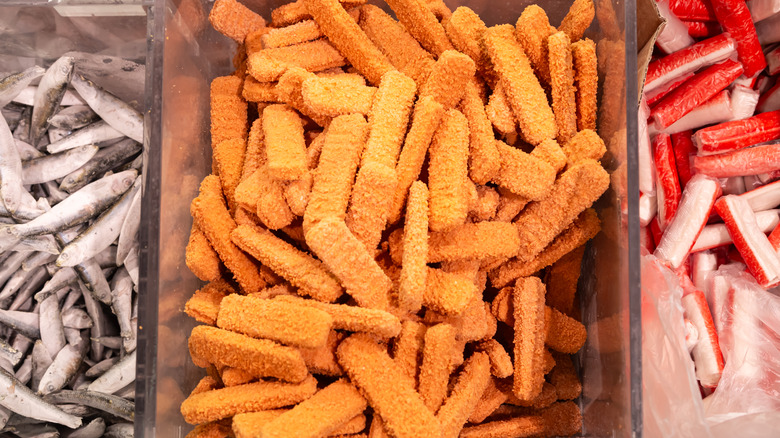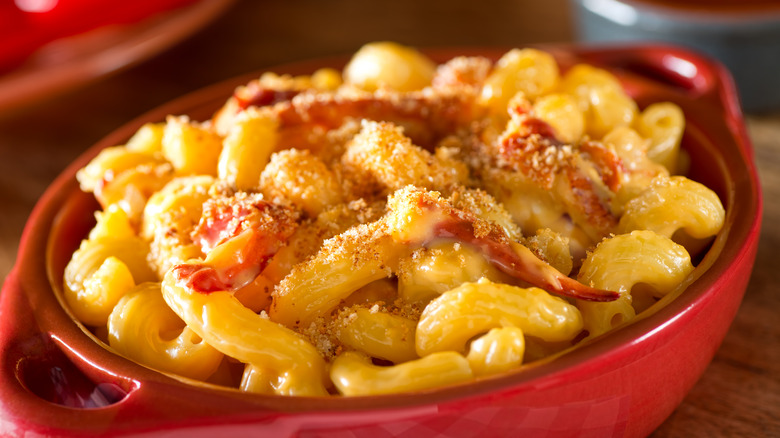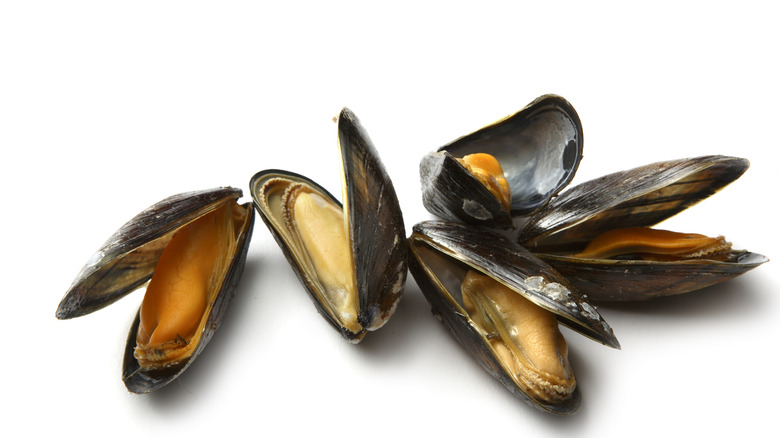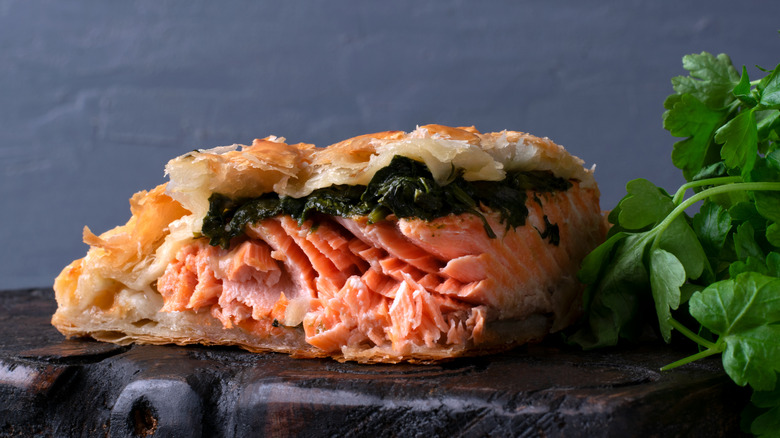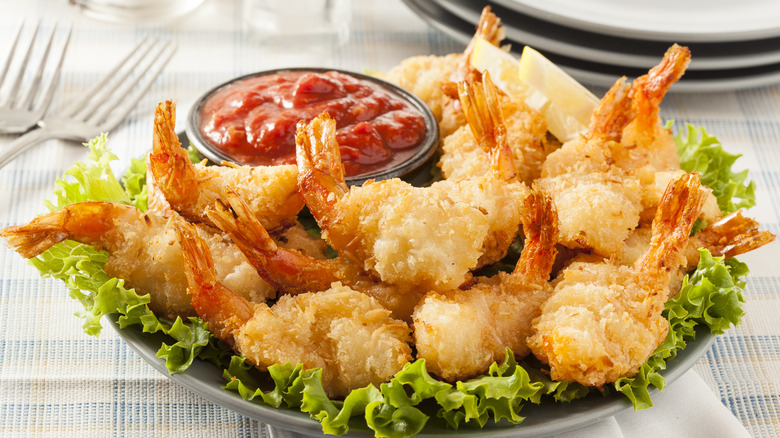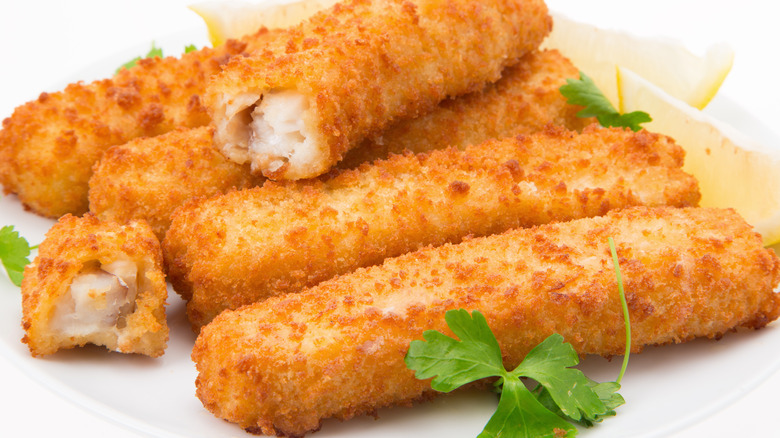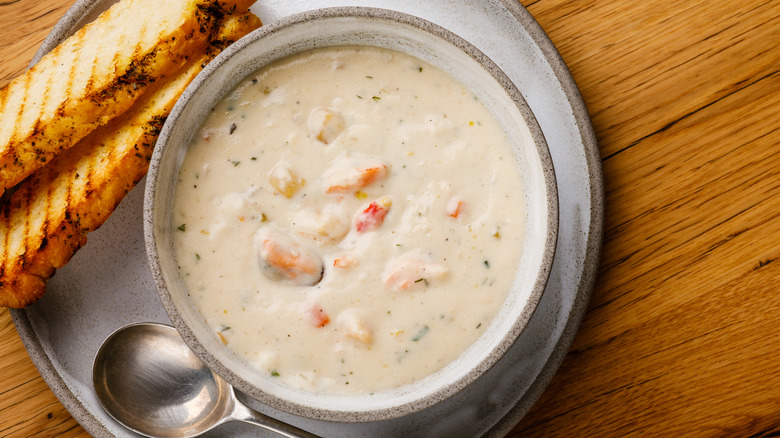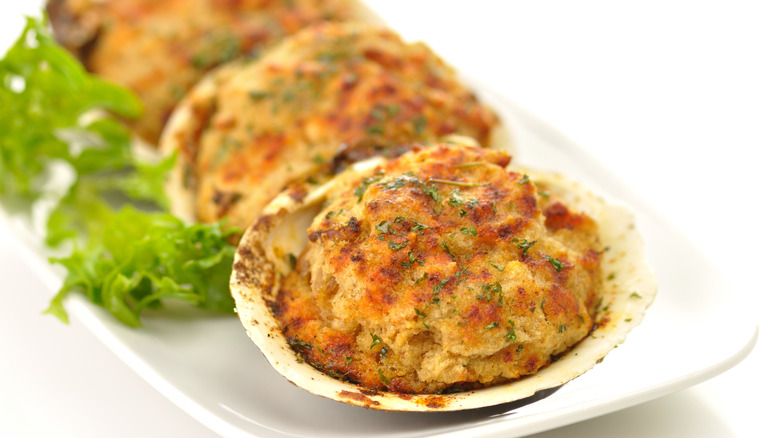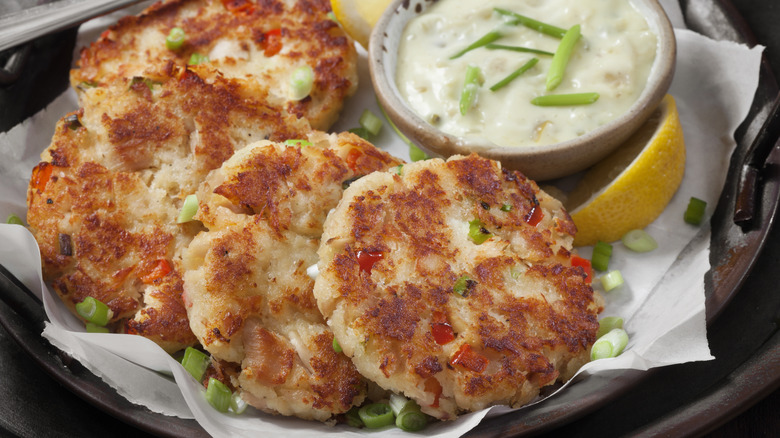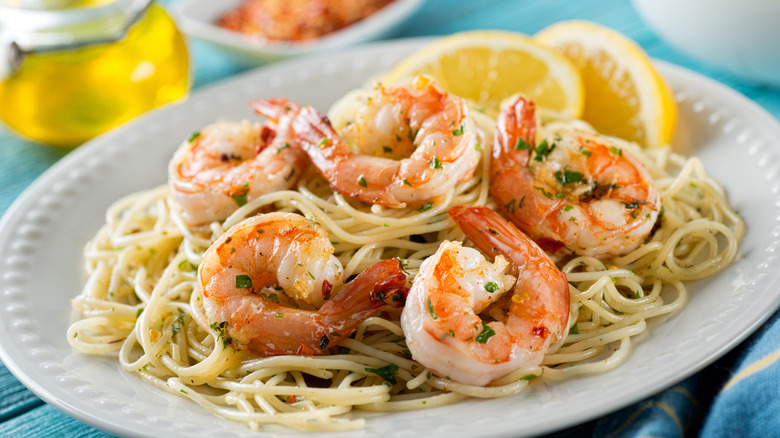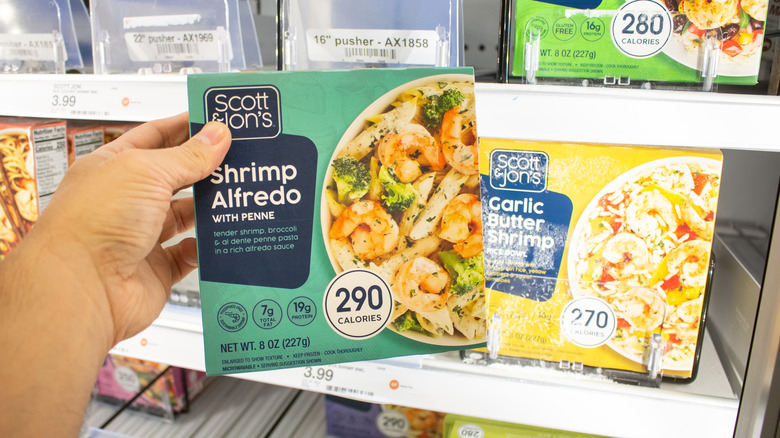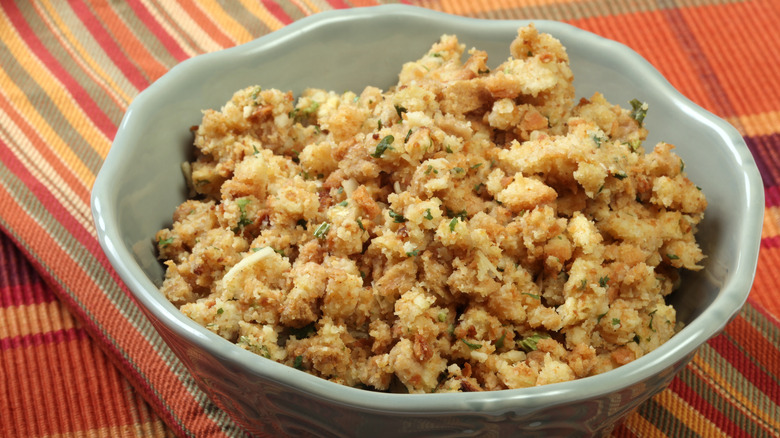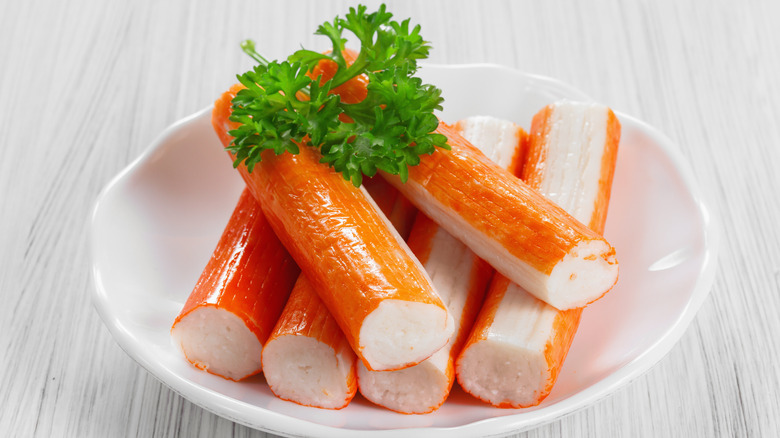Top 12 Unhealthiest Store-Bought Frozen Seafood Products
Seafood is generally placed in the context of a healthy, wholesome diet, and dietitians regularly suggest incorporating more seafood into our meals. Though things are not so straightforward even with fresh seafood — some options are more sustainable and nutritionally better than others — the situation gets particularly problematic when it comes to frozen seafood products.
Though many are easy, hassle-free solutions for busy weeknight dinners, not all frozen seafood products are created equal. They may all be very convenient, but many are packed with additives, preservatives, and flavorings that help keep the food fresh but don't necessarily align with a wholesome diet. Quite a few frozen seafood products are also loaded with fat and salt, which can be especially problematic for cardiovascular health.
If you're trying to eat less processed foods and want to monitor your intake of salt, fat, preservatives, and the like, this list of unhealthy seafood products will help you figure out what to avoid on your next trip through the frozen foods aisle.
1. Lobster mac and cheese
Pairing lobster with mac and cheese might seem questionable as-is, but the idea comes from the restaurant industry, where the dish has become a popular menu item. The addition of lobster meat turns mac and cheese from a homey, everyday dish into a decadent gourmet affair. The combination is also something you'll find in the frozen section. Typical lobster mac and cheese includes a portion of cheesy pasta topped with chunks of lobster meat, and the combination is usually finished with crunchy breadcrumbs.
Lobster is not the significantly problematic item in the dish. It's a good source of protein and several minerals, but even on its own, it's fatty and packed with cholesterol. When you pair it with pasta that's been doused in fat-laden cheese sauce, the result is a high-calorie bomb that can sometimes pack up to 500 calories per serving.
Though the exact nutritional value varies across brands, one serving of frozen lobster mac and cheese is routinely packed with cholesterol and saturated fat that sometimes exceeds the recommended daily value. Additionally, these meals are often filled with a seemingly endless list of ingredients, including artificial flavorings and preservatives. The combination of ingredients also leads to high sodium levels, usually up to 30% per serving of the recommended daily value.
2. Mussels in sauces
Mussels are the real MVPs of the marine world. They are one of the most sustainable seafood options, act as great water filters, and can help build healthier ecosystems by creating reefs that shelter other animals. Mussels have been part of the human diet for centuries and are a great option to bring more protein and omega-3 fatty acids into your diet. Just as good, they are usually very affordable and take minutes to cook. But you may want to avoid frozen dishes that partner mussels with sauces, mainly due to sauces that lead to an unnecessary increase in sodium and calories.
Products that feature mussels in butter-based sauces represent some of the more obvious issues. Some are made with real butter, but you'll also find versions whipped with butter flavoring or which use vegetable oil, corn syrup, or rely on cornstarch, which may result in a gloppy, artificial texture. These mussels can go over 100 calories per serving, which doesn't seem too bad until you look at the sodium amounts, with some brands reaching a whopping 40% of the recommended daily intake.
As an alternative, opt for plain fresh or frozen mussels and use a simple recipe where the sauce is assembled in under 10 minutes.
3. Salmon Wellington
Salmon Wellington is a dish that imitates traditional beef Wellington. Here, a salmon fillet is coated in an aromatic mushroom mix (or cheese, depending on the product) and then wrapped in puff pastry. Salmon Wellington is an elegant dish with tons of flavor and an appetizing texture, but the frozen version may not be the healthiest take out there.
Dietitians often promote salmon as a great seafood option, as the fish is packed with minerals and vitamins. Salmon is also an excellent source of omega-3 fatty acids, which benefit the cardiovascular system. Though there are some differences between farmed and wild salmon, from a nutritional perspective both are widely considered to be good options to implement into your diet.
Yet, salmon coated in sauces and wrapped in puff pastry is not something that most dietitians would likely recommend. Though the numbers varyacross brands, one serving of frozen salmon Wellington can pack in around 400 calories, but you'll also see brands with amped-up versions that double that number. The ingredients, which often include butter, cheeses, preservatives, and flavorings, also lead to high levels of sodium, saturated fat, and cholesterol.
4. Breaded shrimp
Shrimp are one of the most convenient seafood options in the freezer section as they are easy to defrost and cook. However, prepped breaded versions fall into the less favorable category, mainly due to their inferior nutritional profile.
Breaded shrimp can be labeled differently, depending on the style and the ingredients that go into the breading, with some of the most popular being popcorn, coconut, or parmesan shrimp. The nutritional value of these varieties differs, but overall, these products are frequently high in calories, fat, and sodium. Serving suggestions may include just four shrimp, which can come up to 200 calories, while the sodium levels vary between 15 and 25% of the recommended daily value. Saturated fat sometimes reaches 8 grams per serving.
It should also be noted that breaded prepacked seafood is typically designed for frying. If you opt for this cooking technique, deep-frying can bring even more calories and fats to the table. If you still go with the breaded version, consider baking rather than frying the shrimp. You'll also likely want to avoid products with premade sauce, which can bring more salt and calories.
5. Fish sticks
Frozen fish sticks were introduced to many markets in the 1950s, in part to address the problem of overfishing and convince people to include more fish in their diet. And though no one can dispute the convenience, fish sticks are not the healthiest frozen seafood product you can grab.
As with so many other frozen seafood products, fish sticks can be high in fat, calories, and sodium. Depending on the product, a single serving can hit 20% of the recommended daily value. The percentage of total fat and cholesterol varies among brands, but it mainly stays under 15%, while most servings come in at around 200 calories. This might sound reasonable, but as the suggested serving typically includes a mere three or four fish sticks, your real-world numbers are likely to be higher.
Then, there's the problem of ingredient quality. Many brands opt for minced mixes that are shaped into sticks, a technique that calls for additives to mimic the fillet-like texture but which may be unappealing to health-conscious consumers. Instead, you may wish to look for brands that clearly label the pieces as fish fillets, which may have fewer additives.
6. Clam chowder
It is no surprise that clam chowder is here. In its original form, this American classic already a pretty heavy dish laden with fatty ingredients like cream. As you may guess, the frozen version is not much different.
Though there are several regional variations, the most iconic form of this meal is New England clam chowder, which traditionally combines clams, potatoes, and salt pork in a creamy dairy-based broth. Frozen versions use similar main ingredients, but besides the classic additions as well as various spices and herbs, these frozen packets also include flavorings, concentrates, and food additives.
Half a cup of frozen clam chowder will be approximately 120 calories, but if you consume a more typical bowl, you're likely to be eating over 300 calories in one sitting. Meanwhile, some brands have astronomical sodium levels, reaching 50% of the recommended daily value. The amount of fat also varies. Some of the unhealthiest labels contain 23 grams of total fat in their clam chowders, with 11 grams reserved for saturated fat, making over 50% of the recommended daily value — though other brands are arguably more reasonable, so it always pays to pay close attention to the label.
7. Stuffed oysters, clams, and scallops
Stuffed oysters, clams, and scallops are some of the staple seafood dishes that we typically see in a restaurant setting and are often stuffed with an aromatic mix of breadcrumbs and seasonings, as well as smoky bacon and cheese. The frozen version of stuffed oysters and clams is easy to find in a classic supermarket, but if you're looking for a healthy seafood option, you may prefer to steer clear.
The biggest problem with this product is the stuffing that is often boosted with fatty bacon and cheese, leading to high levels of calories, fat, and sodium. The label on many brands reveal that a serving of stuffed clams has around 100 calories ... with a serving suggestion of only one shell. Sure, you could stick to the suggestion and serve the dish as an appetizer, but you'd still be dealing with relatively high calories for something that will not fill you up. Considering this suggestion, the amount of fat and sodium doesn't seem worrisome, but eat more and you'll soon learn that seven stuffed shells will fulfill the recommended daily value of sodium, sending these golden, crisp treats straight to the list of unhealthy frozen seafood products.
8. Crab and lobster cakes
Crab cakes have a long history in the U.S., but they became a household name only in the 20th century. These seafood patties typically incorporate crab meat, eggs, breadcrumbs, and seasonings. When shaped, they are usually fried until golden and crisp. Crab cakes are especially popular in coastal areas and are a common sight in the frozen section of every well-equipped supermarket. Lobster cakes are similar in style and ingredients, but crab is swapped with lobster meat to create an upgraded gourmet treat. Despite their fantastic flavor and texture, the frozen version of these cakes is somewhat problematic due to the high amount of fat and sodium in many versions of this product.
One crab cake usually packs somewhere between 150 to 200 calories, with many of those coming from fat. Besides high cholesterol seen in many varieties, sodium is particularly problematic, with some brands reaching almost 30% of the recommended daily value in only one cake. The lobster version is even more calorie-dense, with some brands making cakes that can reach a shocking 300 calories per single-cake serving. As expected, the percentage of sodium, saturated fat, and cholesterol is also typically quite high. Both varieties sometimes include various artificial flavorings and preservatives, too, which you may want to avoid.
Often, we prep the cakes by frying them in oil. This brings in yet more calories and fat. If you still choose to eat these seafood treats, opt for baking or air frying as healthier alternatives.
9. Shrimp scampi
Shrimp scampi is a classic Italian-American fusion. The original Italian version used crustaceans known as langoustines, onions, and garlic sautéed in olive oil and white wine, but when the dish came to the U.S., the langoustines, which were locally known as scampi, were swapped with similar shrimp. The unusual name remained as a nod to its traditional and Americanized form. Americans also created different versions of the dish, with the most popular being sautéed shrimp served over spaghetti.
Though this dish comes together in no time, frozen shrimp scampi is still seriously convenient. But you will probably want to skip this one if you want to eat healthier. Most frozen shrimp scampi are high-calorie products, with some brands packing 400 calories per seven-shrimp serving, a significant portion of which are due to saturated fats and cholesterol The amount of sodium often comes out to approximately 660 grams per serving, which accounts for almost 30% of the recommended daily value for a healthy adult.
Moreover, these dishes are usually assembled with many ingredients, including additives and preservatives. Though they are not necessarily a primary reason for concern, you may still wish to avoid these often artificial ingredients. If you don't want to give up your frozen shrimp scampi, a version sold without pasta should be lower in calories than the rest.
10. Shrimp in Alfredo sauces
The original Roman version of the Alfredo sauce combines butter, Parmesan, and salt, while the slightly different American version often adds heavy cream to the mix, resulting in an utterly creamy pasta dish. In its original version, Alfredo sauce is often called al burro (with butter). The best thing about Alfredo sauce is that it has a relatively neutral character, and though pasta does not necessarily need any additions, shrimp is one of its classic partners. Besides the fresh version, the combination is also available as a frozen meal. However, as may be expected from such a fatty dish, it is hardly health food.
As Alfredo sauce is assembled with rich milk products, the obvious problem here is the fat content. Some brands can hold up to 26 grams of fat, including vast amounts of saturated fat, and some even pack small amounts of trans fat — and it really pays to note exactly what type of fat you're consuming. This means that you will eat approximately 30% of the recommended daily value with one roughly 6-ounce serving. Another likely unwelcome addition, as far as most diners are concerned, is a high level of sodium, which sometimes goes over 30% of the recommended daily value, depending on the particular brand you grab. Of course, these dishes tend to be high in calories, so you can hardly expect to be shocked, but this may be best kept as an occasional treat rather than a regular meal.
11. Seafood stuffing
If you have never heard of seafood stuffing, the name is surely self-explanatory. This version of the classic dish mimics the flavors and texture of traditional stuffing but throws some seafood in the mix. It is probably one of the less common frozen seafood products, but it is nonetheless often just as unhealthy as the other entries on this list.
The seafood that typically goes in the stuffing includes scallops, shrimp, and crab meat, but of course the combinations can vary from company to company. While seafood ingredients may be a welcomed addition to a daily diet, along with the choice of veggies and seasonings that are also added to this mix, it's butter and the hefty dose of crusty bread and breadcrumbs that frequently turn this dish into a seriously high-calorie product. Classic frozen seafood stuffing can have over 500 calories per serving, with familiar offenders of high fat and sodium levels coming to the plate.
Seafood stuffing is sold as an individual dish that you can serve on its own or as a side, but it's also sometimes used to stuff crabs and salmon, so be sure to read labels carefully.
12. Many products labeled as vegan, alternative, or imitation seafood
Man-made food products — including those labeled as vegan or alternative seafood — have long been controversial. This product group includes imitation crab sticks (also often known as surimi) and other items such as imitation shrimp. Though calories could be a problem, depending on how these products are used, for many the real issue is in consuming highly-processed food that shares few similarities with fresh, mineral-laden, protein-packed seafood. For example, crab sticks don't use any crab meat but instead opt for fish and use flavorings and food coloring. In a side-to-side nutritional comparison, fresh crab readily outweighs imitation crab, as it's an excellent source of protein and numerous minerals that the imitation stuff simply doesn't contain (at least not in nearly the same quantities).
Besides starch, sugar, and oil, these products include colorings, additives, and preservatives that attempt to mimic the look, taste, and texture of real seafood. For anyone with food allergies, particularly to fish, it may be best to avoid unlabelled brands or dishes altogether, as some packages have been found to not fully describe what's in the actual product.
